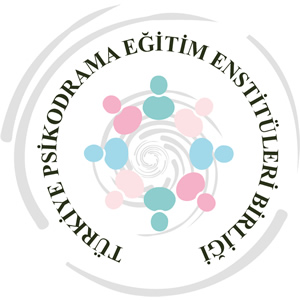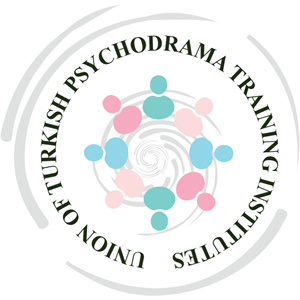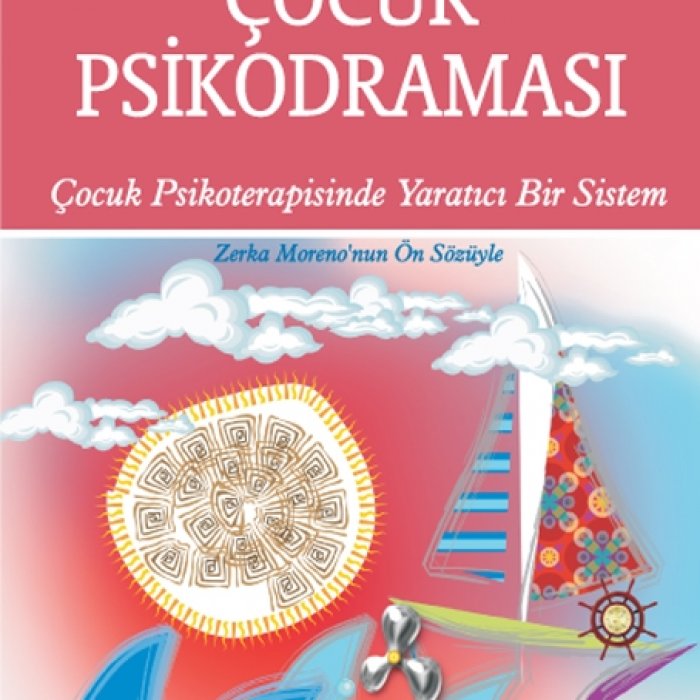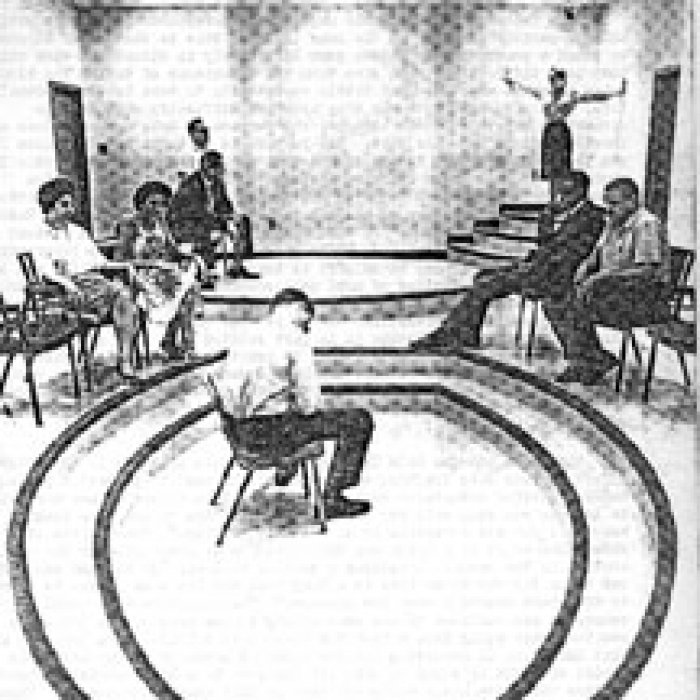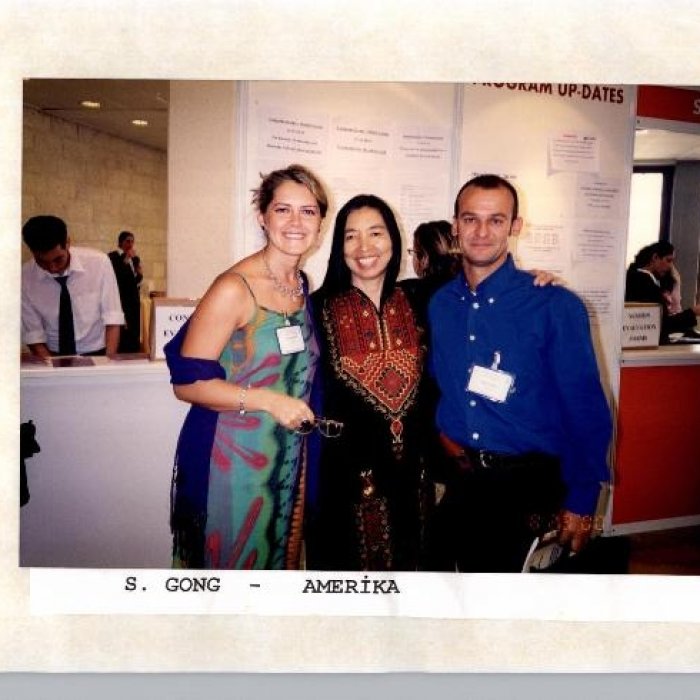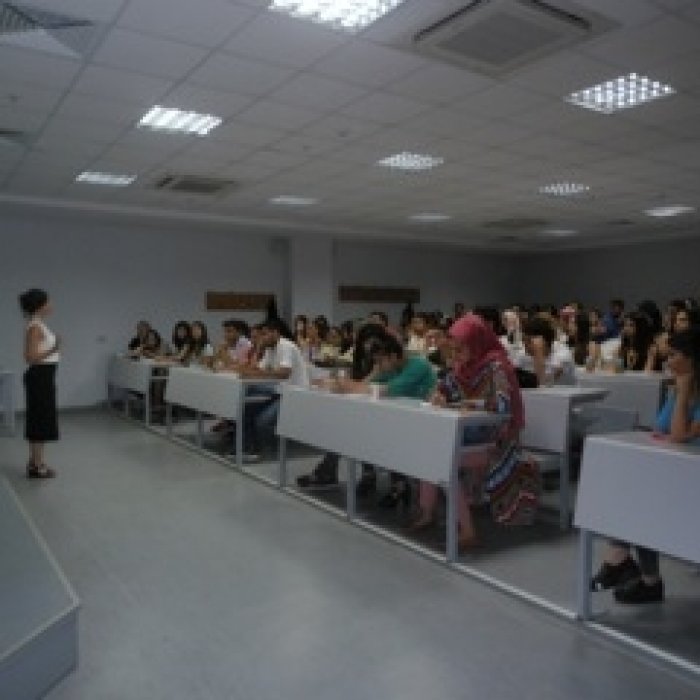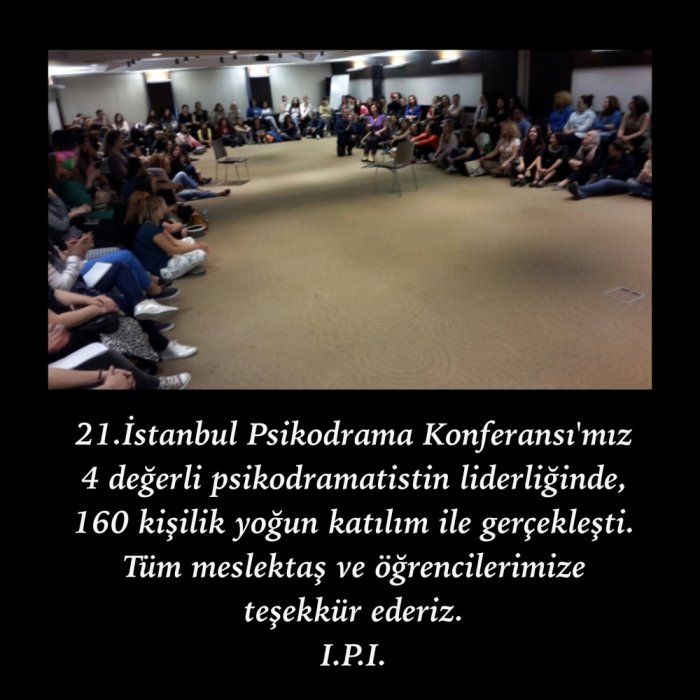A Psychodramatic Procedure of the Earthquake Trauma - Psychological Preparation for Trauma
( An Empirical Model )
Psych. M.A. Deniz Altınay
Psychodrama Trainer, President of Institute
At the time Jacob Gershoni asked me to contribute a section for his new book, my community-people were stil suffering from the aftermath of the eurthquake that hit Turkey. Now, weeks later although the nightmare is a memory of the past, it is still a very vivid now. We, at the İstanbul Psychodrama Institute, have been busy helping people to heal from their traumatic expriences and overcome of the effect of their terrible ordeal. The trauma effected everyone both the people who sought help and those whose profession is to provided it. Through our work we discovered, and actually confirmed our belief, that psychodrama techniques can repair the psychological scars caused by the trauma. We also understood the ways people could prepare themselves psychologically to deal with trauma. For this we developed a model and a learning program.
The following discussion will be divided into two parts. First, we will describe sociodramatic and psychodramatic interventions used in the treatment of trauma. The second part will present the model fort he psychological preparation to trauma. The model has been developed primarily for companies and large organizations. Then it was adapted to treat individuals, victoms of trauma, who were seeking psychological help.
Trauma is defined as “any life-threatening, emotionally over-whelming catastrophe that breaks through a person’s ordinary coping mechanisms,whether in childhood or as adult, whether from a single episode or a lifetime abuse” (Hudgins & Kellerman, 2000, p 12).
On the 17th August 1999 a severe earthquake occured around the İstanbul area in Turkey. Although it was not the first time an eurthquake hit our country, it was a particularly big disaster because of its proximity to İstanbul. More than 30.000 people died and over 100.000 people were injured and/or became homeless. The traumatic effects of the disaster were not confined to the day and eurtquake occured but continued for one year as a result of a series of shocks. Geologists offered different explanations for the continuous waves of aftershocks. This actually increased people’s anxieties as they were continually anticipating the next eurthquake in İstanbul. There was grief all over the country. People were scared of death or of being injured. They had nightmares of being in ruins, were anxius because of increased uncertainty concerning their future and fearful of loosing their possessions and property. On a deeper level they were deeply preoccupied with questions about life blief. These topics dominated all conversations among the people, whether they were talking face to face or on the phone. There was a natural sociodrama happening with the participation of the entire membership of our society. It was also a good time to extend this to the treatment office in the form of sociodrama.
Moreno's theory is based on a triadic system that includes sociodrama, group therapy and psychodrama. Sociodrama addresses issues that are in the forefront of the concerns of a community. He coined the term: sociometry, a concept that refers to healing of large societies. Psychodrama, on the other hand, addresses the mental healing needs of the individual. The methods of sociodrama and psychodrama (all conducted in the context of a group therapy) helped us work with both the social effects of the objective world and with the individual subjective perceptions. Personally, I was not in Istanbul during the first, big earthquake, but I experienced all the ensuing shocks, So while I experienced the feelings of living under the influence of earthquakes, in the beginning I was somewhat detached, a fact that enabled me to be an observer from the outside.
A month after the earthquake, we resumed our regular training workshops with our psychodrama trainees. At that time the earthquake occurred, we had eight different groups, a few experiential groups, as well as training groups for companies. When it came to dealing with the effects of the trauma, the difference among the groups did not matter. All were personally affected by the trauma. Some members in the groups developed strong earthquake fears even a few months after the onset of the earthquake. We also noticed that fears triggered by the earthquake tumed out to be fears with other psychological contends not associated with the earthquake showing Post Traumatic Stress Disorder (PTSD) symptoms.
We identified, therefore, two different kinds of fears. By using sociodrama as a warming-up, we hoped to address the issue of the level of coping skills, thus dealing first with the real fears of society. In that way we were addressing the issues that concerned the entire community. This had to be taken care of before moving on into psychodrama dealing with the individual‘s personal fears. We used transcendental roles, that is, roles pertaining to questions of the meaning of life. In these roles the protagonist assumed the role of “the energy of life” and explored ways of viewing life. We believe that these roles are essential for conducting sociodrama. Transcendental roles explore basic issues such as fears, anxieties, insecure feelings, the need for being understood, the wish for sharing, and the search for having the strength to cope and go on. Through this kind of warm-up we created group cohesion. Whereas the exploration of these issues emphasizes the similarity of all human beings, at the same time members began to discover how each experience was different fiom the others after the earthquake. Those discoveries made them more and more close to their fears.
Although we were not particularly experienced working trauma induced by earthquakes, we thought that psychodrama would be a valuable intervention that could provide us clues for understanding the developmental process of trauma. It was not very easy for us to formulate a procedure for working with such traumas. We had to take risks and cope with our own anxieties. As a preamble to my description of the psychodramatic procedure we developed, I would like to point out that our approach was very successful. All the persons we treated became free of their fears and the problems associated with the trauma in one single psychodrama session. This was true for those who were part of the earthquake trauma groups and those who were members of the psychodrama training groups.
The Model
The special psychodrama procedure we developed consisted of five steps. These are as follows:
1) Understand the fear of earthquake. Each of our protagonists mentioned a different earthquake fear, a fact that surprised us because we assumed that since they all experienced the same earthquake the fear would be the same as well. But different individuals experienced and perceived a different earthquake totally. Those differences lead us to talk about the concept of “individual earthquakes”.
2) Clarify the irrationality of the fears or any part(s) of them. The irrational components of the fears were seen as clues to the deep, inner issues and personal anxieties that were awakened by the earthquake.
3) Identify the particular feeling(s) that were formed by those irrational fears and consequently govemed the individual’s daily activities. The reason we focus on the feelings is that they tend to remain intact, unaltered by the passage of time.
4) Discover the connection between the protagonists’ present perception of the world and other significant persons in their lives. In the course of the psychodramas we noticed the existence of a connection to a beloved person in the protagonists lives as well as to an early childhood incident. Realizing the connections facilitates catharsis and becomes an important group issue during the sharing part of the session.
5) Explore ways to alter the irrational components of the faulty concepts and troubling feelings, as they related to the protagonists’ unresolved issues with significant others. Indeed, it has been noted that exploring these elements by means of role playing enactments is considered a major factor that contributes to therapeutic effects of psychodrama with trauma survivors (Kipper, 1998).
Our experience has shown that the second step (2) was the most important one. This steps calls for clarifying the irrational components of fears.
Case Illustrations
The first case involves a group member who complained of a loss of motivation after the earthquake. We started with sociodramatic warm-up by all group participation. Its main theme concerned the nature of human beings and relationship between them. For most of the people we worked with, the feelings of fears, anger and desperation began to disappear about two months after the onset of the earthquakes but some were harboring the fears for a long time. The first illustration involves such a case;
The protagonist was a 45 years old male with a teenage daughter who wanted to get rid of his earthquake fear. He was very anxious, and afraid of subsequent earthquakes. He suffered from sleeplessness, nightmares concerning the earthquake, and mood shifts during the daytime. We established the treatment contract which included safeguarding confidentiality and a commitment on his part to be available for follow-up sessions should he require further psychotherapy.
As the protagonist was describing his fears following the earthquake, he started to present the absurd (irrational) components of it. For example, he was scared that the corridor between his daughter’s room and his own bedroom would be collapsed and he would not be able to reach her. He bought long ropes, believing that sometime in the future, he might have to climb down from the height or to get out from the pit. We asked him to think of a possible disaster scene where such a possibility might occur, but he could not not think of any. We asked him to select auxiliaries to portray the roles of the collapsed corridor and the pit. Using role-reversals he described the scene to the auxiliaries. Being in the reversed role position was very important to understanding the protagonist's unconscious contents. Then the protagonist listened to the auxiliary egos and was asked to pay attention to his own feelings and reactions to the portrayal. The Director asked him to explain the meaning of the symbols of his reactions and his feelings. He was also asked to think of any connection between these symbols and any person from his life. He answered all those questions easily. Falling into the pit and trying to climb out with the rope reminded him of his own father. The collapsed corridor reminded him of the relations between his daughter and himself and quarrels with his wife about these relations. He explained that his father lives in Australia and keeps marrying young women and he is already into his fifth marriage. The protagonist was very angry with his father for leaving his mother and himself when he was a young boy. He was very embarrassed about the whole situation. He characterized his relations with his daughter as “very cold” and “distant”. He wanted to be closer but felt that being a father did not allow him to develop such closeness. He pointed out that his daughter was closer to her mother.
After that point the session followed the classical psychodrama procedure and ended with group sharing. In a follow-up session the protagonist said that the psychodrama made him realize that his fear was not that of the earthquake and that he had an undisturbed night sleep. He said that after the psychodrama he felt extremely tired.
The protagonist in the second case illustration was a woman. She said that she was afraid of entering her bedroom fearing the walls will collapse on her. She thought that this was ridiculous and absurd, and could not make any sense of it. The protagonist was asked to set up a scene depicting the bedroom scene with auxiliaries serving as mobile walls. When the time came, the walls were asked to move. As soon the psychodrama simulated earthquake started, the protagonist began screaming with fear and with the help of the director's probing, immediately remembered that she had the similar fear once when she had sex with her husband. She recalled that at that situation, for some reason she felt compelled to mention her ex-boyfriend’s name to her husband. At that time her life and marriage were in trouble. Her husband knew about the ex-boyfriend and was disturbed by her interest in him. In the past, prior to the particular incident with her husband, the protagonist had recurrent dreams about the ex-boyfriend and felt uncomfortable about it. But subsequently these dreams disappeared. Now, she found the old anxiety surfacing again, awakened by the fear from the earthquake. Following the psychodrama session she reported that she was free of her earthquake related fears. It appears that suppressed feelings of guilt, anger and modesty found a way to express themselves through the earthquake fears.
The third illustration involved a female protagonist who complained of a fear of what she described as “loosing her past” because of the earthquake. She explained that she was scared of uncertainty, and of “becoming nothing”. In her dreams all the houses in her street were destroyed. The strange thing was that she was not scared of being dead, injured or being in pain. Upon examining the meaning of her irrational symbols, it tumed out that the uncertainty and the fear reminded her of her mother and father. The destroyed buildings symbolized the collapse (obliteration) of her past. During the psychodrama she portrayed her mother as a controlling person who was constantly criticizing her and her father as a punishing and non-accormnodating person. She said that throughout her entire life she had been fed by the fears of losing something. During the psychodrama, she enacted old scenes and tried to express her repressed feelings and resolve old conflicts. The following day she reported that the only thing she remembered from the psychodrama was that she worked on her family relations. There was no mention of the earthquake related fears which seemed to have disappeared. Again, it appears that the psychodrama allowed the protagonist to face her unconscious conflicts, which were brought out through the earthquake related fears.
The fourth, and last case involved a female protagonist. She explained that she used to pack her belongings into a suitcase and sit motionless in the corner of her house whenever the earthquake and aftershocks occurred or whenever she felt fearful of impending earthquakes. She did not move out from her house in spite of the fact that she was scared of being trapped under the collapsed building. The first clues we thought needed to be clarified were (a) packing the suitcase and (b) sitting frozen, motionless. Upon probing she said that these feelings reminded her of her grandmother. When punished, as a child, she was locked in the basement and told not to move at all. She recalled being very sacred in the basement, sitting and crying quietly. These events were very difficult and hard times for her. Being trapped under the collapsed building served as the second clue. It reminded the protagonist of feeling ignored and neglected by her mother. The protagonist required further psychotherapy following the psychodrama. One month later she reported that her earthquake related fear disappeared. In our understanding the reason for the therapeutic success of the psychodrama intervention is that the earthquake related fears are re-enactments of unconscious issues brought to the surface through the reactions to the earthquake.
The continuous after shocks and their impact underscored for me the need to devise a preventive program, one that will train people to better anticipate and cope with trauma. Through our continuous work I developed the following model.
Psychological Preparation For Trauma:
Decreasing the effects of trauma I believe that Moreno's theoretical approach is singularly suited to offering a way of teaching people how to better cope with trauma. Moreno viewed trauma in a broader context not only as an intrapersonal phenomenon but also as an interpersonal relationship one. He noted that during World War I, entire populations were being subjected to traumas from a large number of sources. In his view psychodrama was designed not only to change the life of individuals, but to heal the traumas of the world (Moreno, Bloomkvist & Riuzel, 2000). One of the basic questions that needs to be answered is who is less affected by the trauma? The person who shall better survive is an individual who has high self-esteem, trusts others, and has access to an experiential psychotherapy group to facilitate self-exploration and obtain support. Such an individual is the one who has successfully faced his or her past traumas and overcome their debilitating effects. This individual expresses him or herself creatively and spontaneously, and knows how to experience the moment. My experience with 100 subjective observations led to the formulation of the following model.
There are four key elements in the model:
1) Introduce the basic concepts of the protagonist-centered approach and explain how basic trust can be adversely impacted during early childhood. Explain how this approach increases the individuals' self-confidence in the group.
2) Emphasize the importance of having good relationships with support groups such as family, business friends, best friends, close environment around him for support and sharing.
3) Explain the importance of spontaneity training, relations between spontaneity and creativity, and their role in life. Help people to discover their own creativity potential.
4) Develop the concept of “security belt” following trauma. This includes understanding what to do during the trauma, after the trauma, and the search for emergency and other services.
Each of the above elements may require different psychodramatic and sociodramatic interventions. To be successful, the model for preparing people (as distinct from the model of treatment described in the beginning of the paper) requires a long term teaching and training process. This is not a program that can be successfully attained in a few sessions. To be implemented the model requires the training of trauma trainers. The model is still in the stage of development, and I think of it as “a psychological immunity” system.
References
Hudgins, K., & Kellermann, P. F. (2000). Introduction. In P. F. Kellermann & M. K. Hudgirts (Eds.) Psychodrama with trauma survivors.(pp. 11-19). London; Iesica Kingsley
Kipper, D. A. (1998). Psychodrama and trauma: Implications for future interventions of psychodramatic role-playing modalities. The International Ioumal of Action Methods: Psychodrama. Skill Training, and Role Playing, 51, l 13-121 .
Moreno, Z.T., Bloomkvist, L. D., & Ritzel, T (2000). Psychodrama, surplus reality and the art of healing. London: Routledge.

